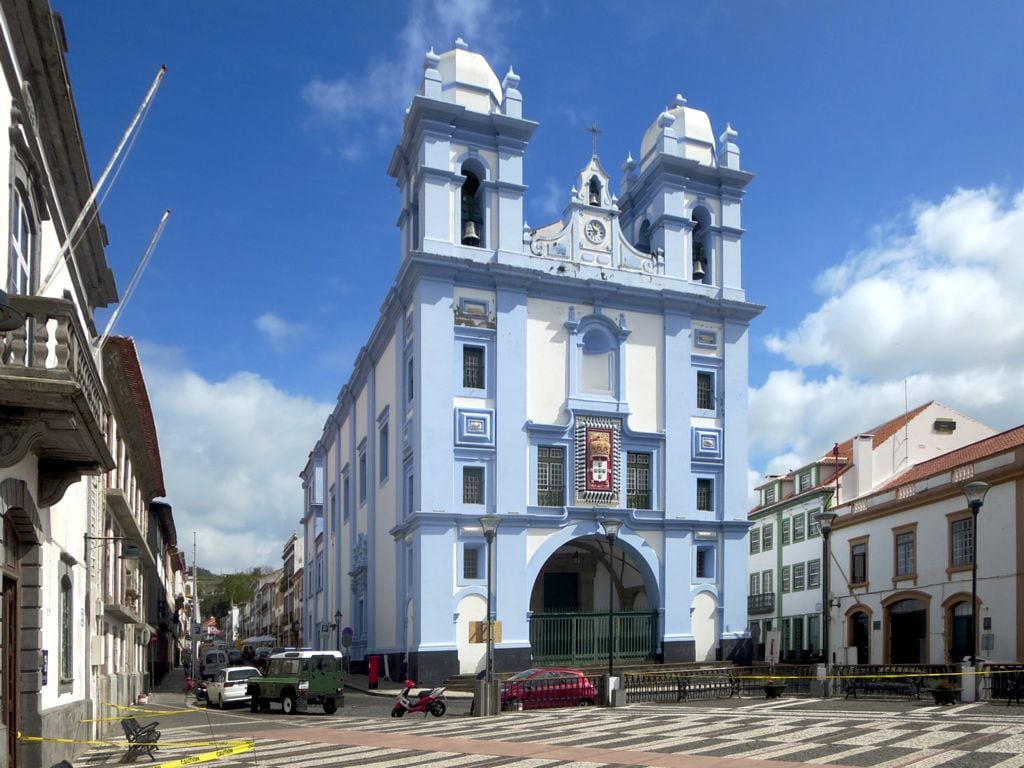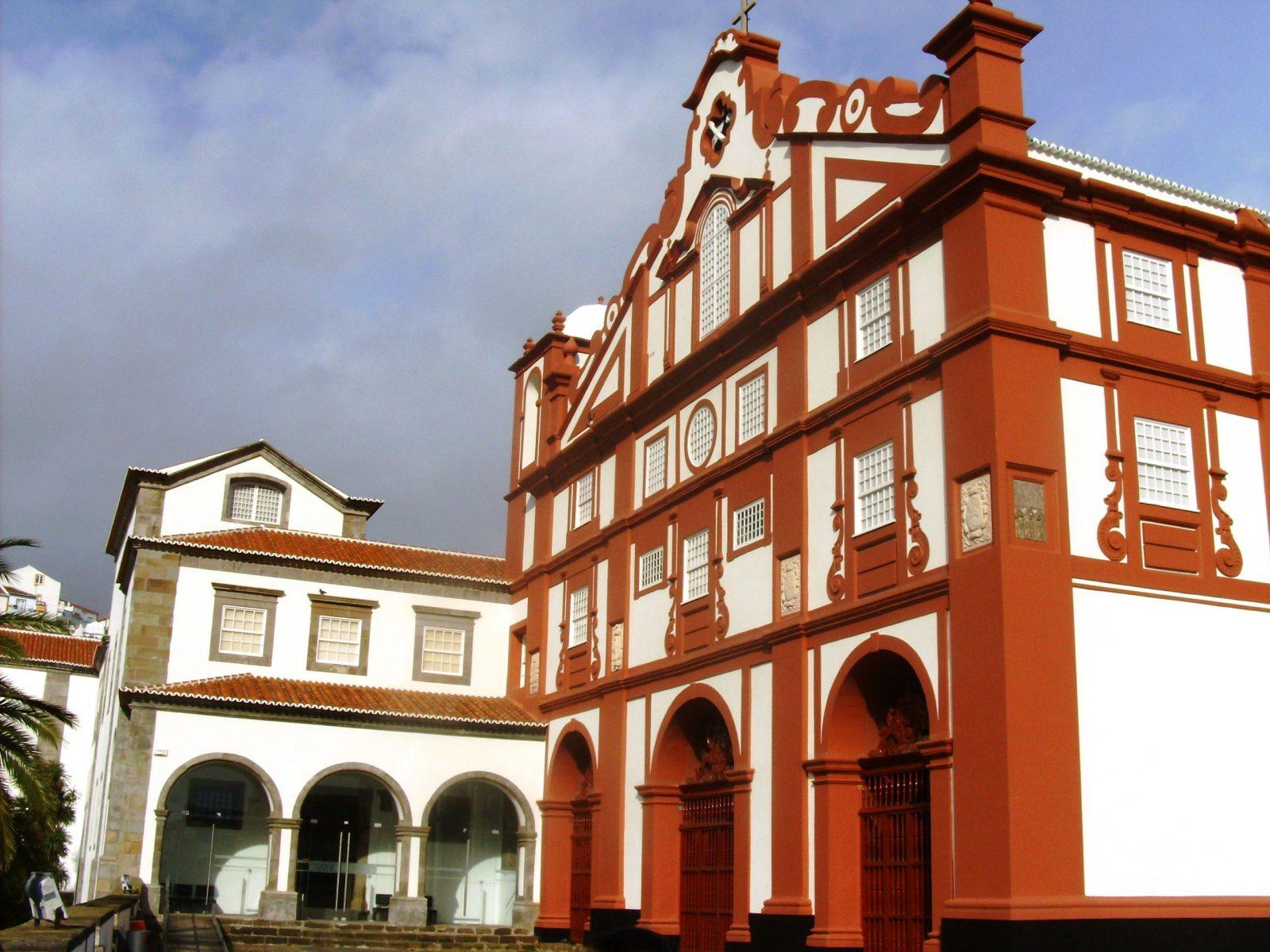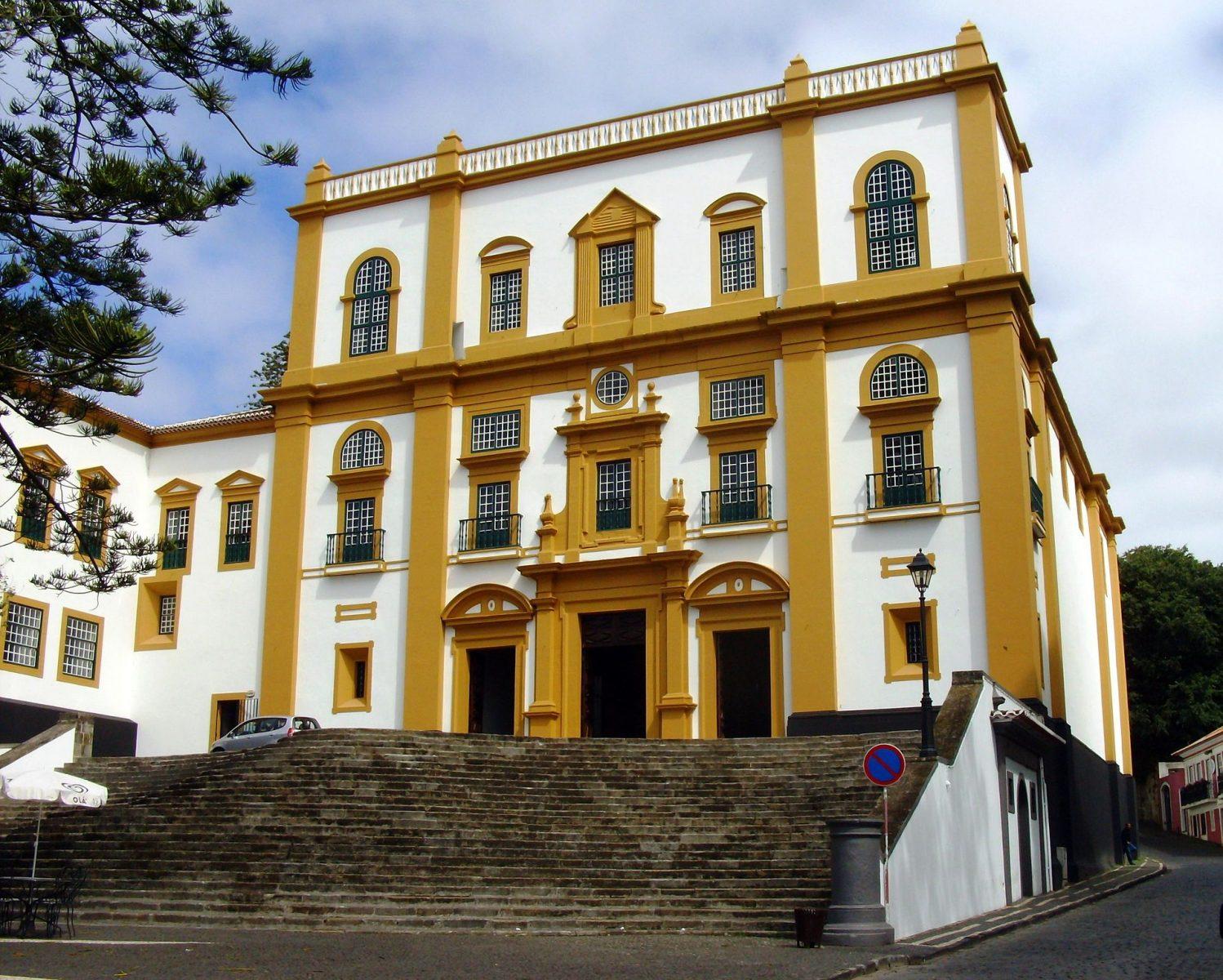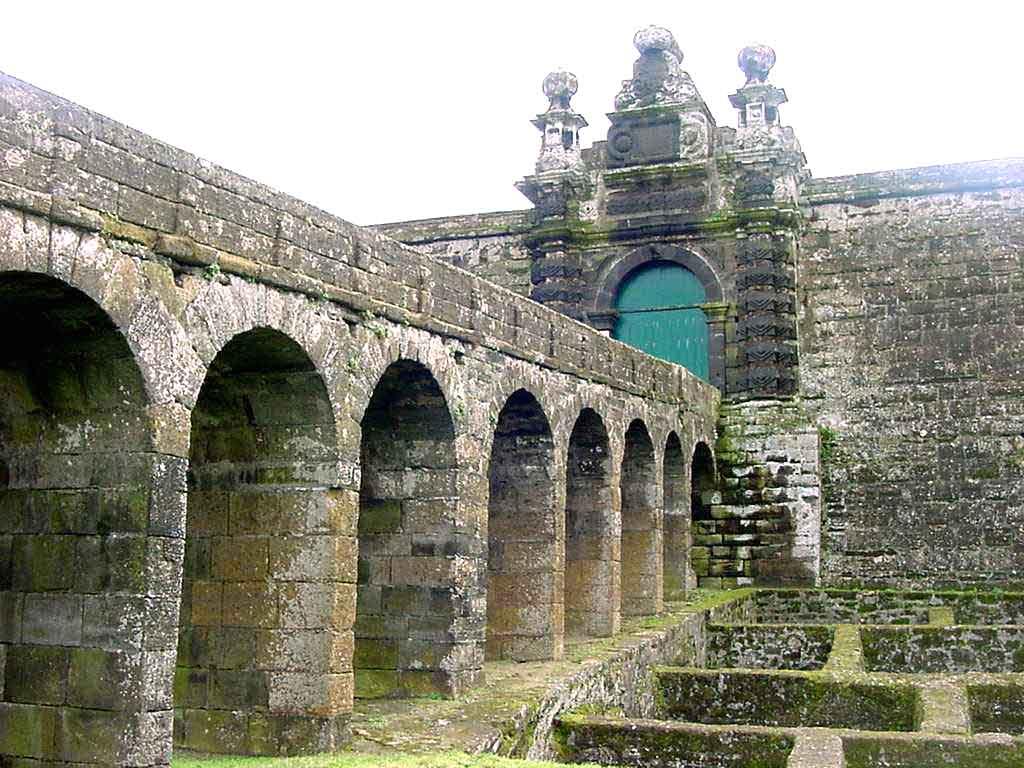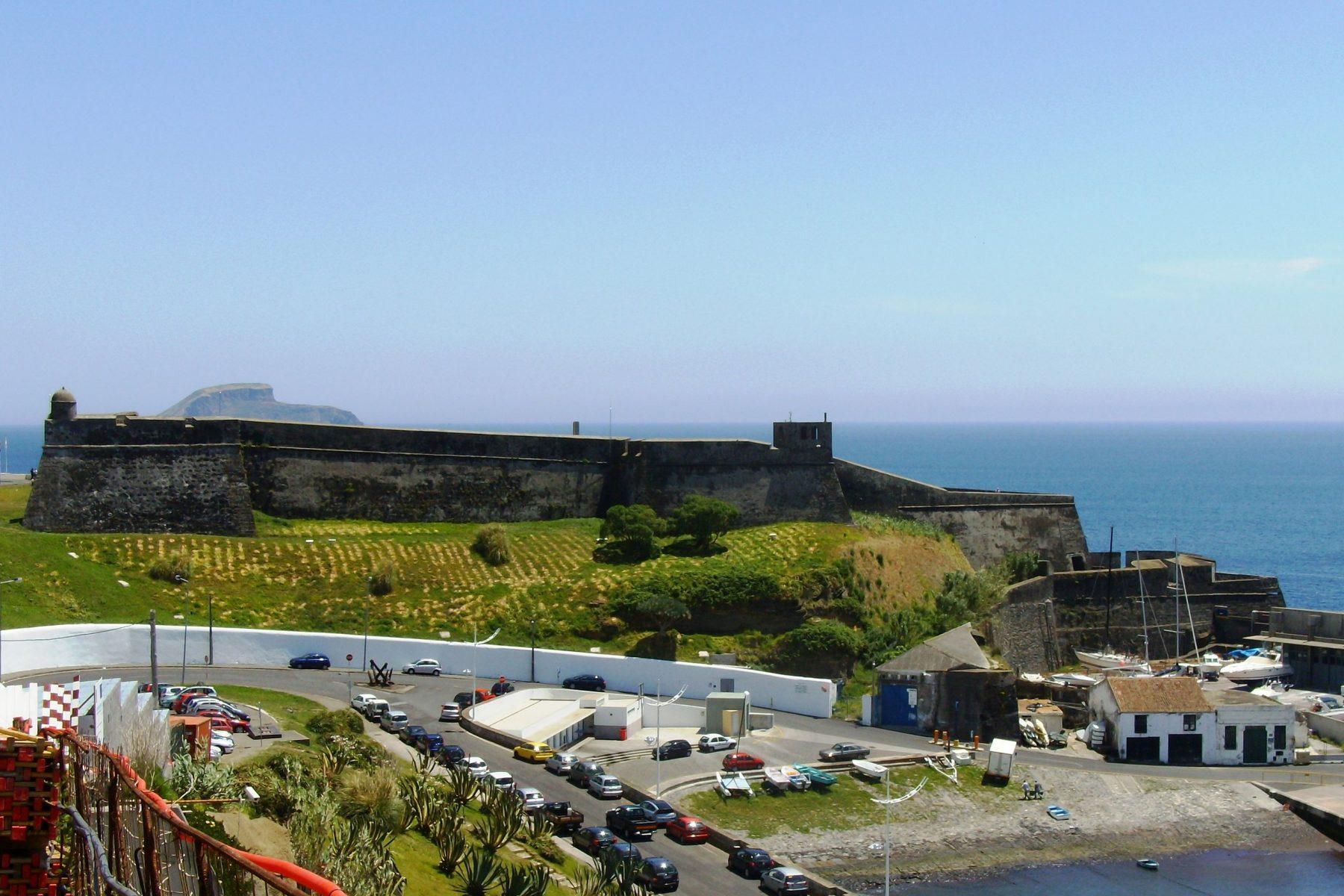Places to Visit in Angra do Heroísmo – Terceira Island
Angra do Heroísmo is located on the southern coast of Terceira Island. The city is the historical capital of the Azores and also the seat of the Diocese of Angra.
The historic center of Angra do Heroísmo was classified as a World Heritage Site by UNESCO in 1983. Angra do Heroísmo is also home to the 1st Garrison Regiment, one of the oldest military units in Portugal.

Fotografia de Filipe Bem
Índice de conteúdos
History of Angra do Heroísmo
Angra do Heroísmo was once the most important city in the Azores. It was chosen as a settlement location by the first settlers. The first houses were built on the slope, and at the highest point, construction began on a castle to defend that settlement. The castle was known as the Castle of the Mills, which is now called Alto da Memória.
Throughout the 16th century, the settlement grew, becoming a village, and in 1534, it was the first in the Azores archipelago to be elevated to the status of a city. In the same year, it was also chosen by Pope Paul II as the seat of the Diocese of Angra, with jurisdiction over all the islands of the Azores.
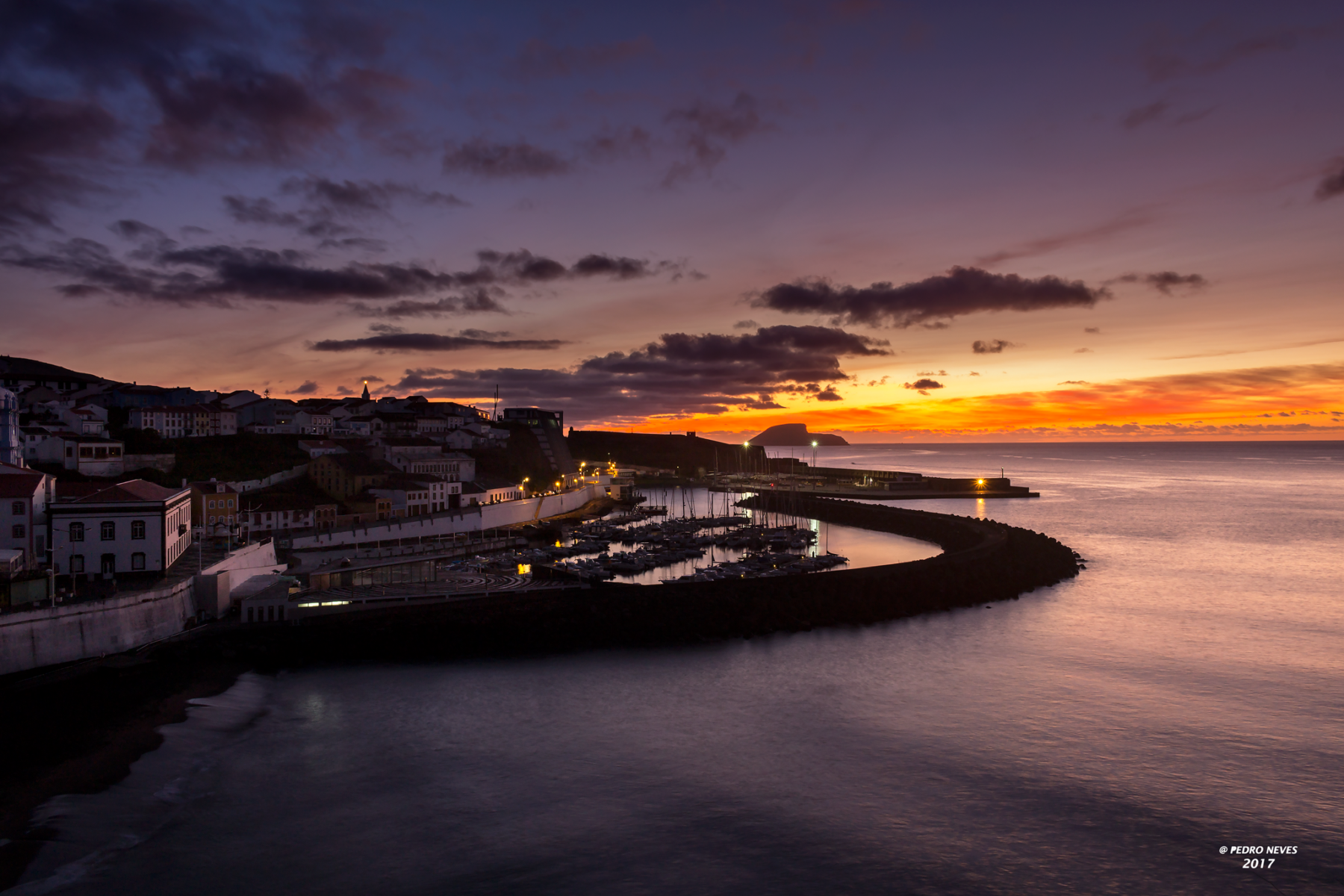
Fotografia de Pedro Neves
Much of its progress was due to the importance of its port, which served as a stop for the so-called Carreira da Índia, where vessels stopped for refueling and reloading of goods and valuables coming from India and Brazil.
A lot of history unfolded in this small city, such as the expulsion of the Spanish in 1641, earning it the title of “Always Loyal City,” and the detention of Afonso VI of Portugal in the Fortaleza do Monte Brasil from 1669 to 1684.
Angra do Heroísmo was also the capital of the Azores Province, the seat of the General Government, and the residence of the Captain-Generals, as well as the headquarters of the Military Academy from 1810 to 1832.
In recognition of the many outstanding services rendered by the city, a decree was created in 1837 that granted Angra do Heroísmo the title of “most noble, loyal, and ever steadfast city of Angra do Heroísmo.”
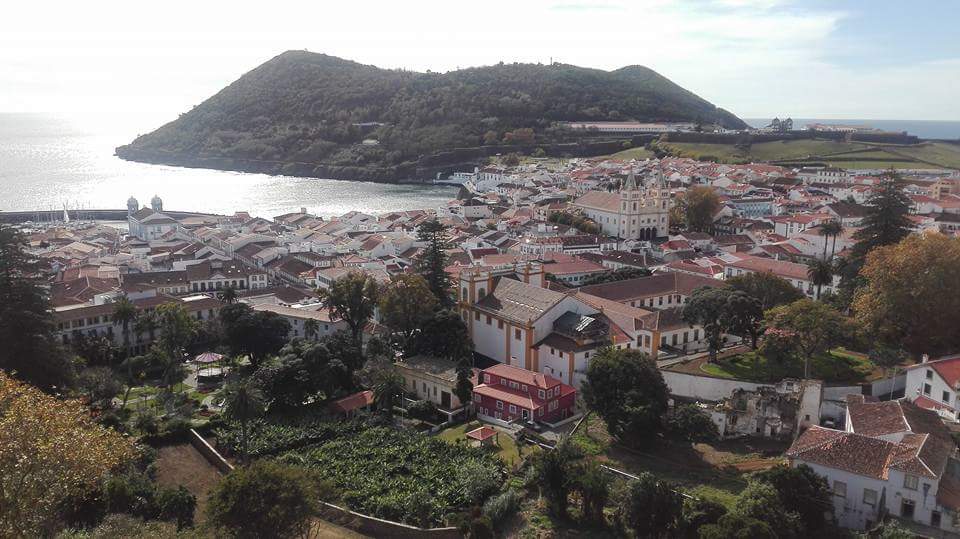
Fotografia de Dahra Santos
Places to Visit in Angra do Heroísmo
Angra do Heroísmo is a place full of history, and as such, it is rich in tourist attractions to discover. Below is a list of the city’s main attractions:
Historic Center
The historic center of Angra do Heroísmo is filled with historical and cultural heritage. It starts with the largest non-religious festival that takes place annually in the historic center, the Sanjoaninas. This festival dates back to the 16th century, lasts about a week, and its theme varies from year to year.
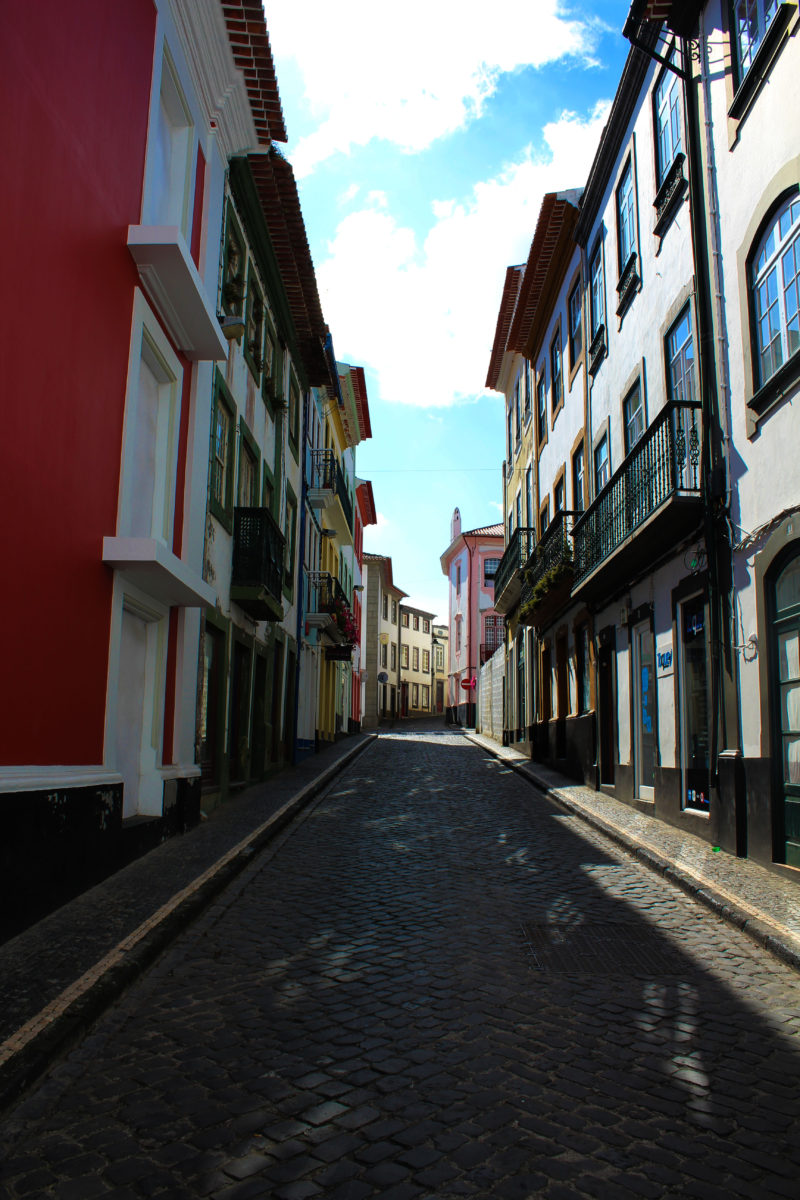
Fotografia de Ana Rodrigues
The Museum of Angra do Heroísmo, located on Ladeira de São Francisco in the former Convent of São Francisco, dates back to the 17th century. The museum features collections of nautical, military, and fine arts.
The Church of Nossa Senhora da Guia is the burial site of Vasco da Gama’s elder brother, who fell ill and died while returning from his first voyage to India in 1499.
Also in the historic center is the Church of the Most Holy Savior of the Sé, founded in 1570 and completed in 1618. It has 16th-century panels and an altar from the early 18th century. It suffered damage in the 1980 earthquake and later lost its right tower.
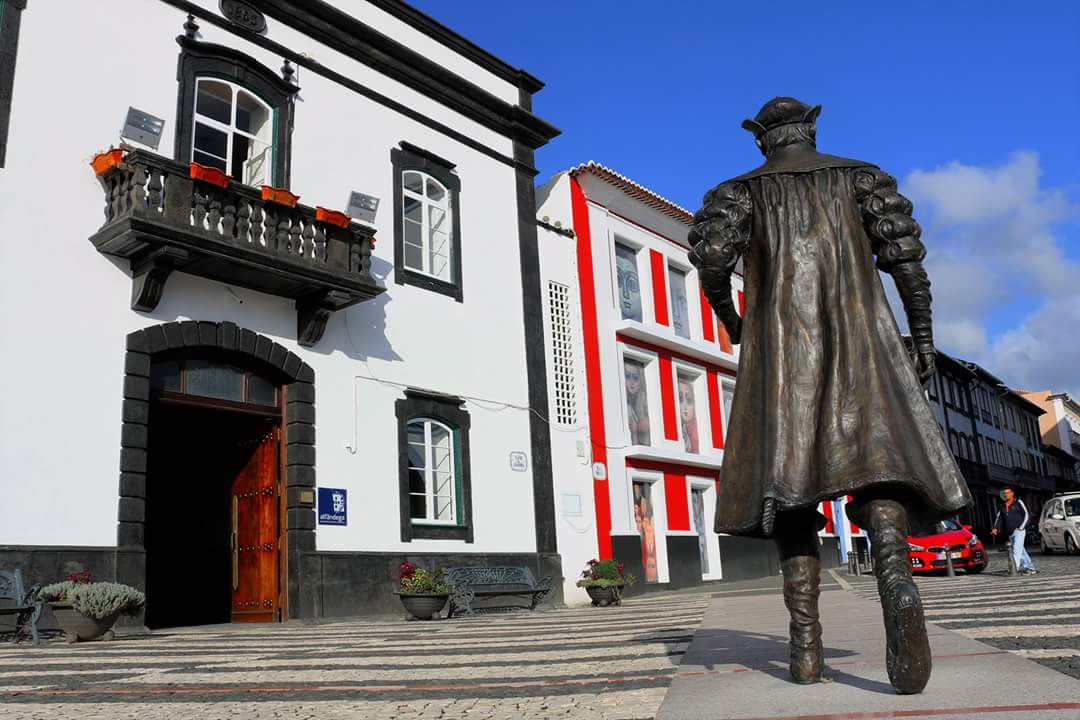
Fotografia de Deja Braulio
The Bettencourt Palace dates back to the 17th century and has a baroque style; it currently serves as a library. The historic center also features the old Episcopal Palace from 1544 and the walls of the Convent of São Gonçalo da Ordem de Santa Clara, dating from 1545.
The Captain-General’s Palace is the former Jesuit college. This palace has hosted two kings, Dom Pedro IV (1832) and Dom Carlos (1901).
In addition to these, there are other historical monuments worth visiting in the historic center of Angra do Heroísmo.
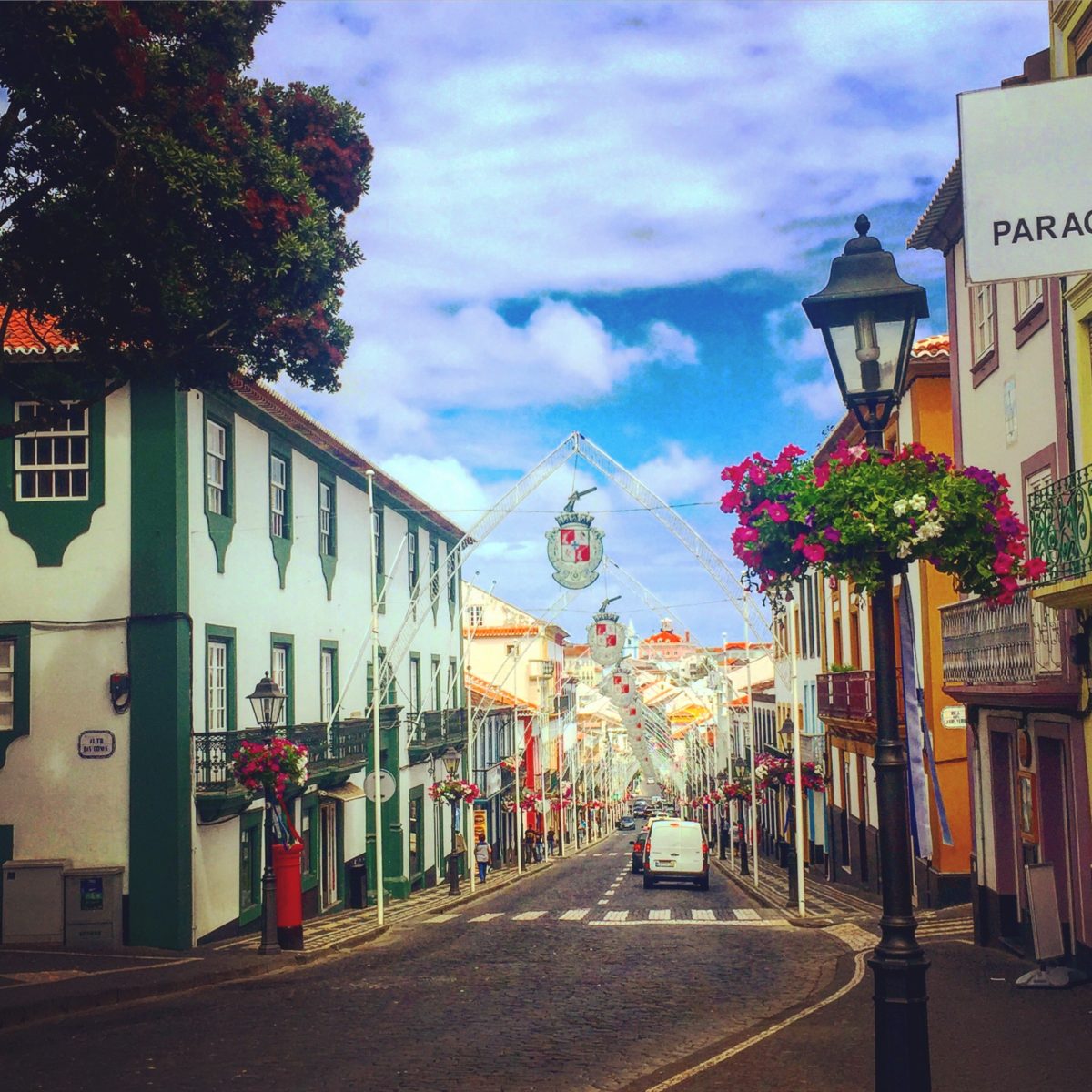
Fotografia de Ana Sousa
Marina of Angra do Heroísmo
The marina of Angra do Heroísmo is located on the eastern side of Angra Bay. It was inaugurated in 2004 and is situated where the Port of Angra once was.
This location is of great importance: it was where various ships and vessels that followed commercial routes passed through. The marina has a capacity for around 300 vessels and offers excellent infrastructure for users and visitors.
Monte Brasil
The Monte Brasil is a peninsula formed from the eruption of an underwater volcano on Terceira Island. This volcano originated from the sea and with its eruption created an inlet, leading to the establishment of Angra do Heroísmo.
It is part of the Natural Park of Terceira Island and a Natural Reserve. Monte Brasil is considered the largest volcanic structure on the coast of the Azores, and from the top of the mountain, one can see the junction of Terceira Island with the extinct volcano.
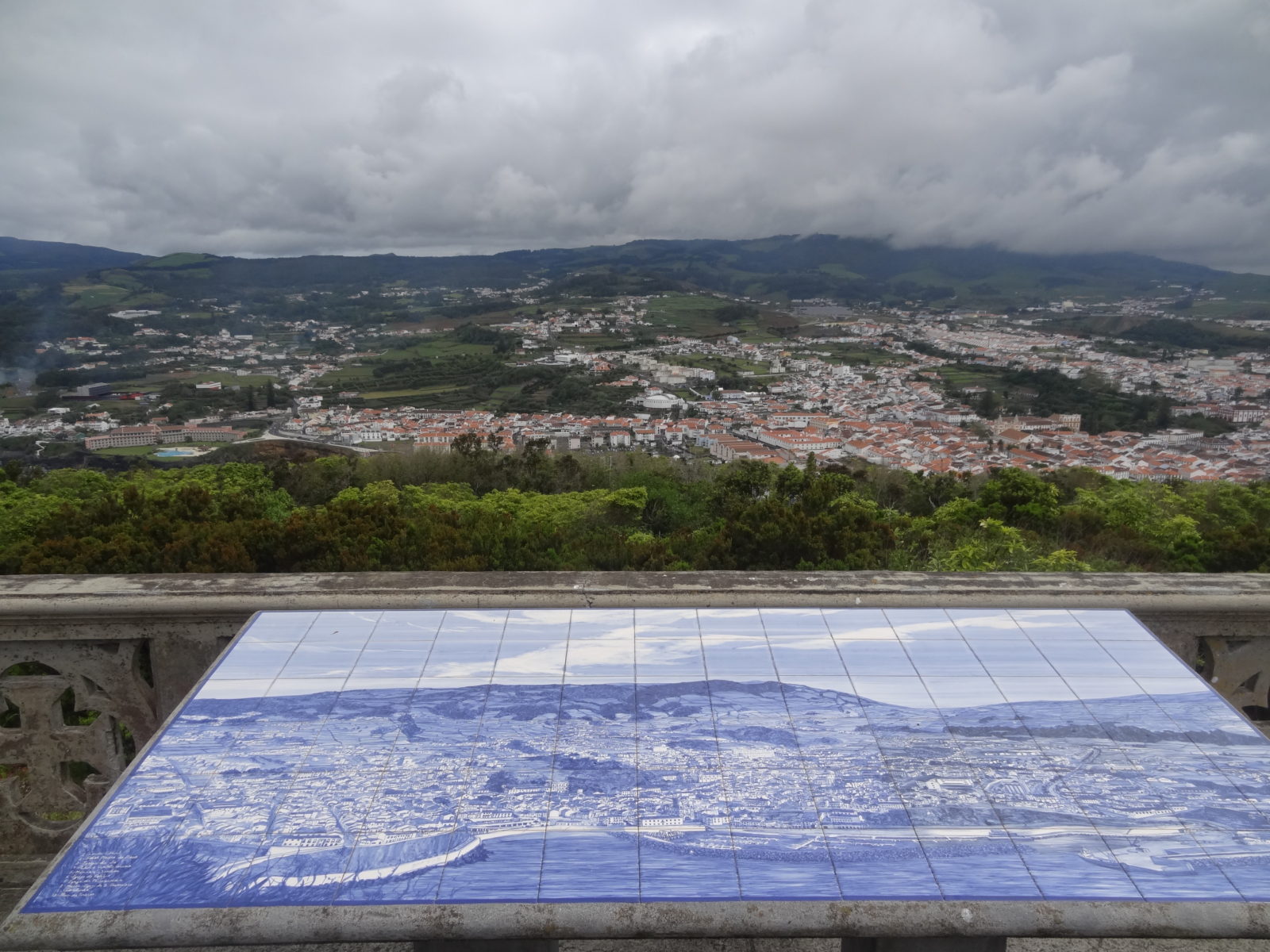
Fotografia de José Cachopo
See also: Monte Brasil from the sky
Monte Brasil not only has much history represented through various structures located on it, but it is also a great option for more contact with nature. It is possible to take relaxing walks or even hiking trails passing through fortifications and walls while enjoying the beautiful landscape of this volcanic region.
Jardim Duque da Terceira
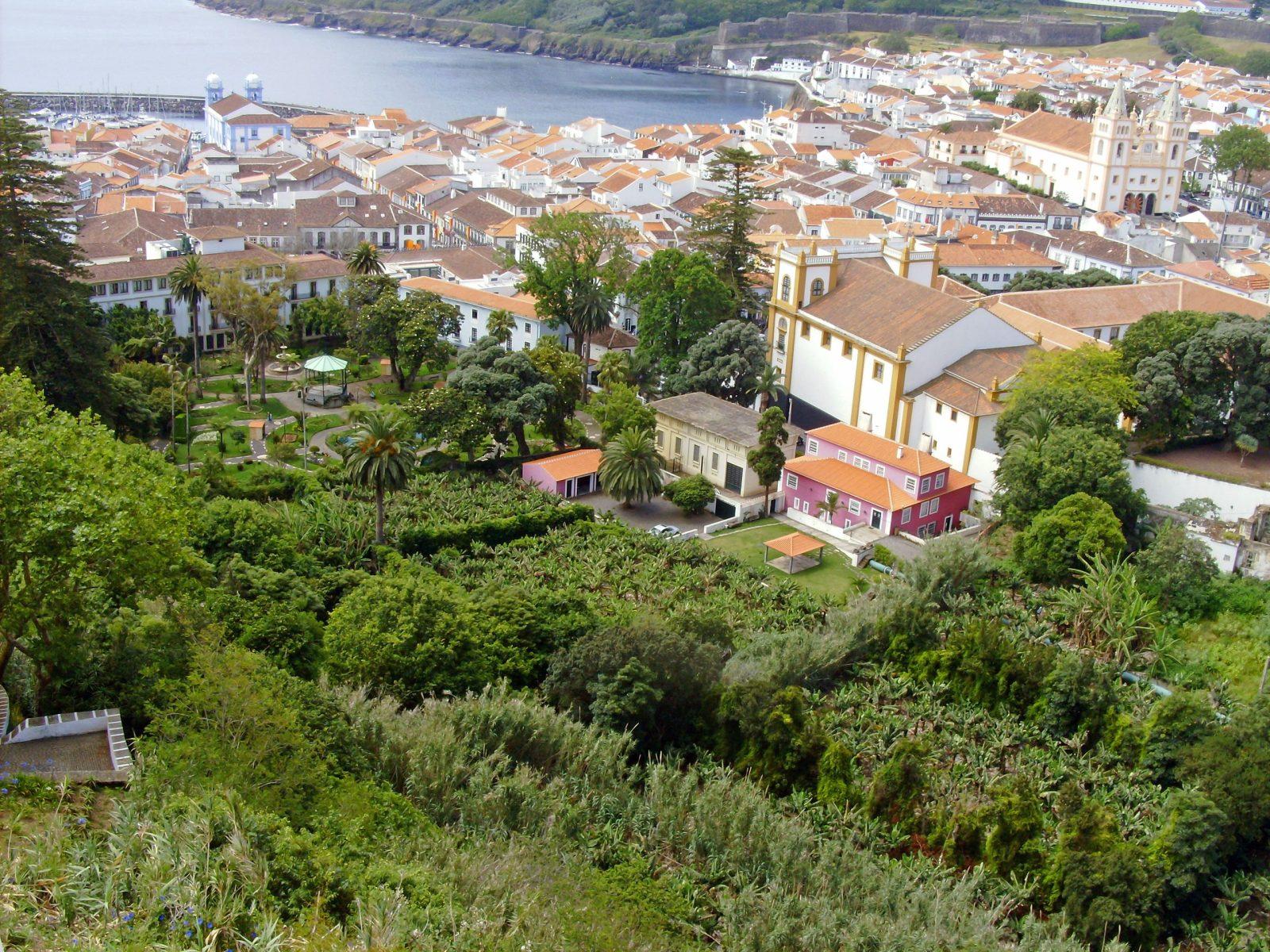
Jardim Duque da Terceira: ao fundo, a baía de Angra. (C) Carlos Luis Cruz
The Jardim Duque da Terceira, which is the Municipal Garden, is located in the historic center and is considered one of the most beautiful classical gardens in the Azores.
The garden is situated on the grounds of the former Jesuit Convent, now the Captain-General’s Palace, and the Convent of São Francisco, now the Museum of Angra do Heroísmo.
The garden still retains two valuable elements from the old Franciscan enclosure: the “Tanque do Preto,” an old irrigation tank from the enclosure, where there is a statue of a black man wearing an indigenous Brazilian necklace, and a set of four tiles depicting a biblical passage from the “Prodigal Son” from 1740.
Cathedral of Angra do Heroísmo
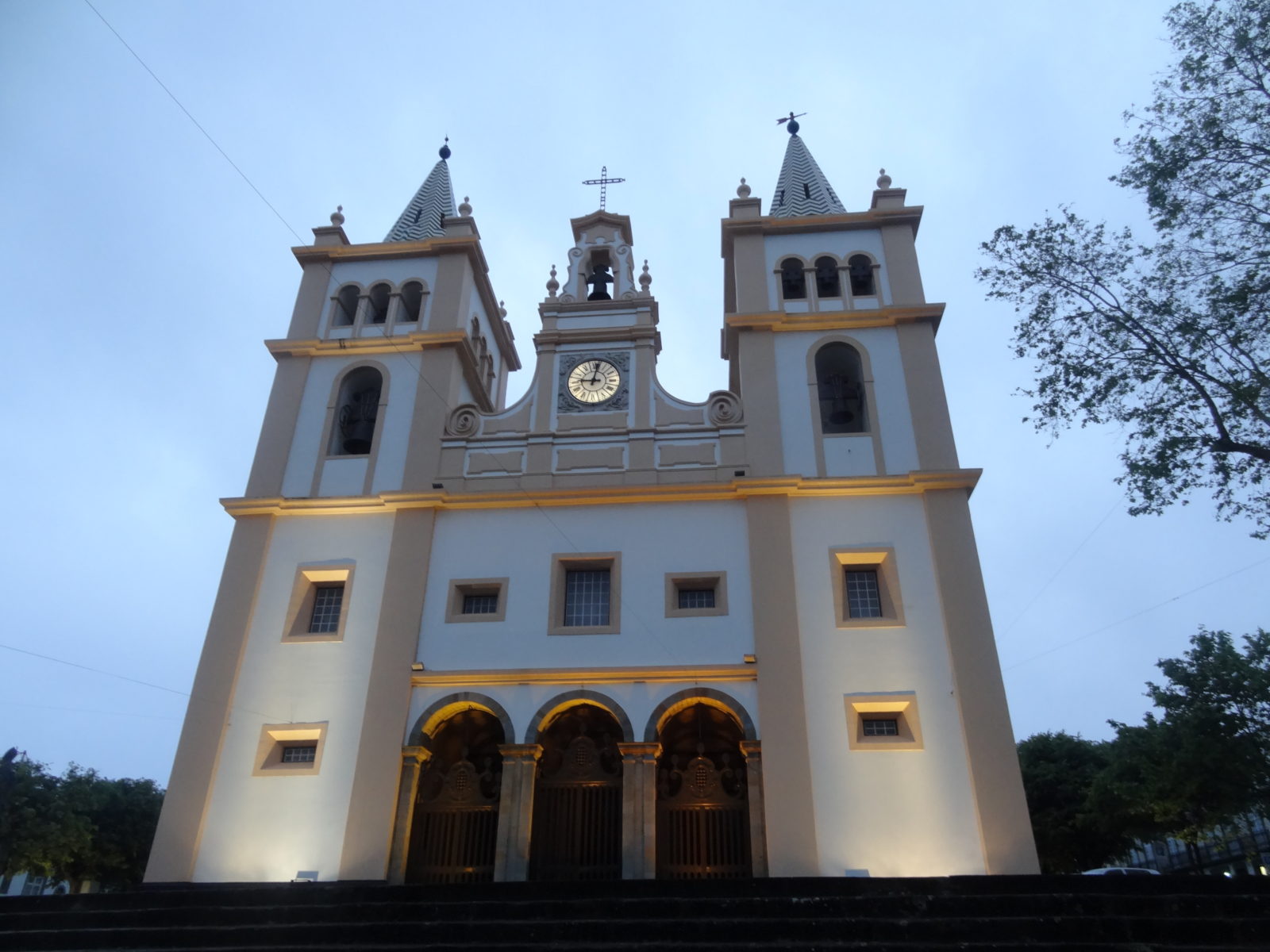
Fotografia de José Cachopo
The Church of the Most Holy Savior of the Sé, also referred to as Sé de Angra do Heroísmo, is located in the historic center of Angra do Heroísmo and is the seat of the Bishopric of Angra, encompassing the entire Azores archipelago.
The Church of the Most Holy Savior of the Sé is the largest religious temple in the city and urban area, also classified as a World Heritage Site.
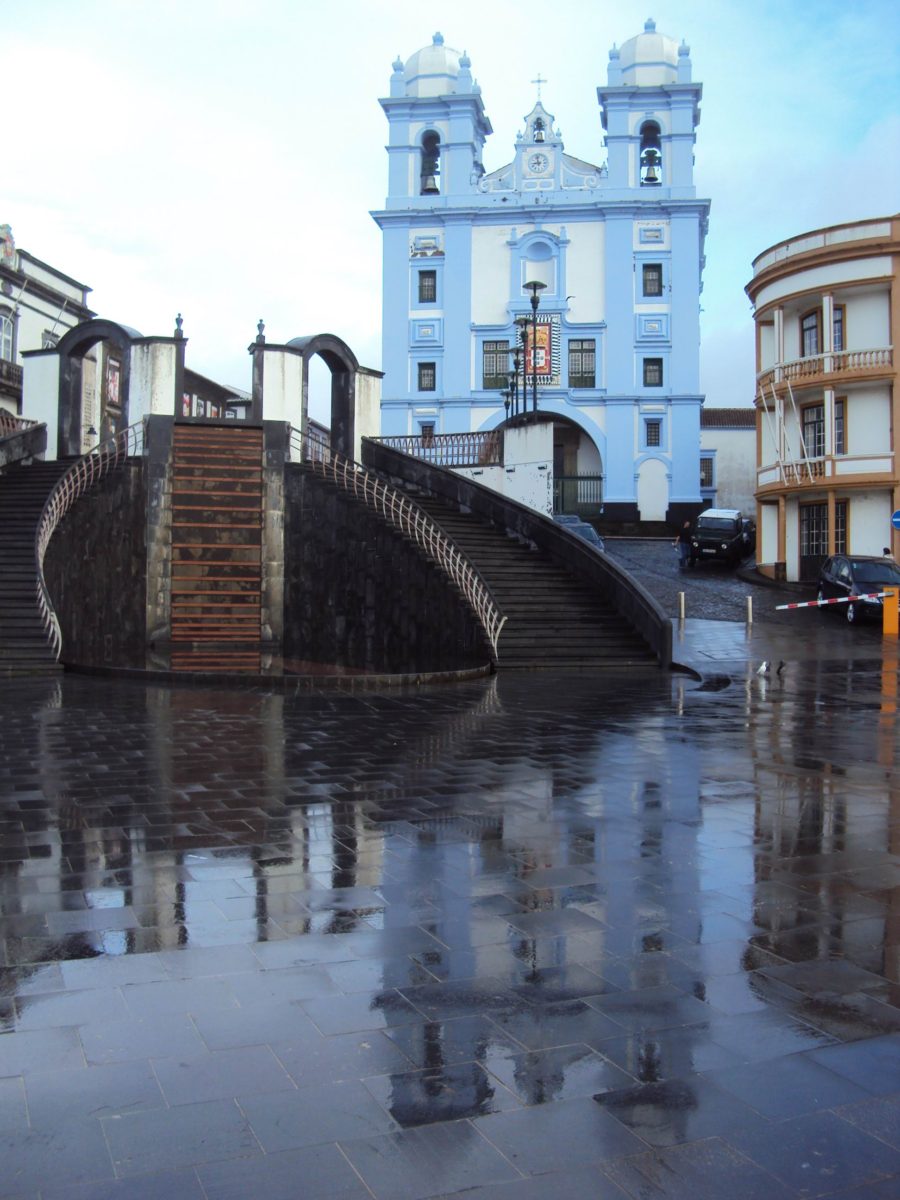
Fotografia de Mário Amaral
The Sé was built over the old Church of São Salvador, which dates back to the 15th century. From the old church, only the main altar remains, located below the chapel.
The current church was built in 1570 and has since undergone various renovations due to weather conditions and calamities such as the earthquake of 1980 and a fire in 1984.
Alto da Memória
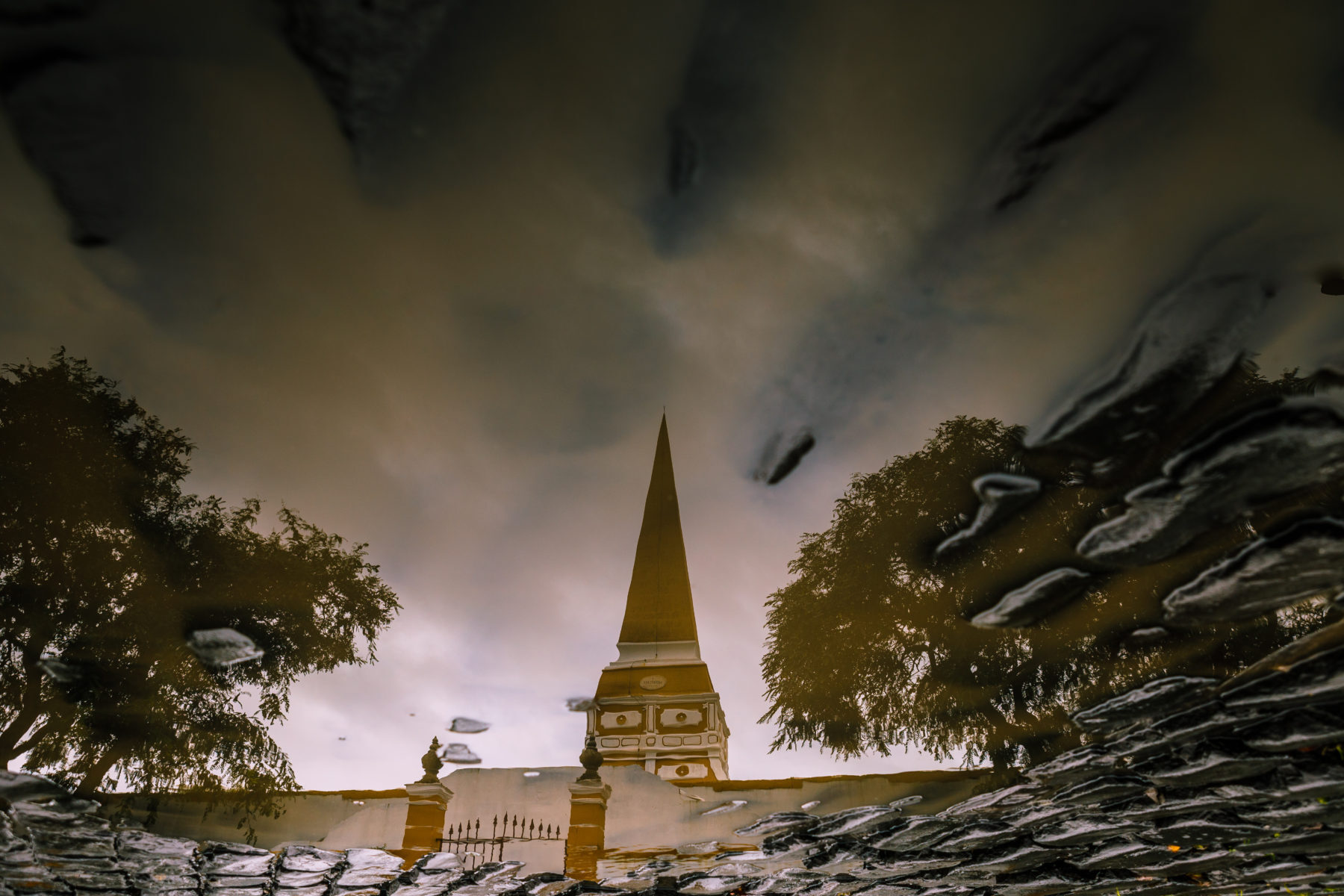
Fotografia de Márcio Borges
The Alto da Memória, also known as Outeiro da Memória, is located at the top of the beautiful Jardim Duque da Terceira.
The Obelisk was erected at the site of the first defense castle, called the Castle of the Mills from 1474. It was built in the 19th century in honor of Pedro I of Portugal for his visit during the Portuguese Civil War from 1828 to 1834.
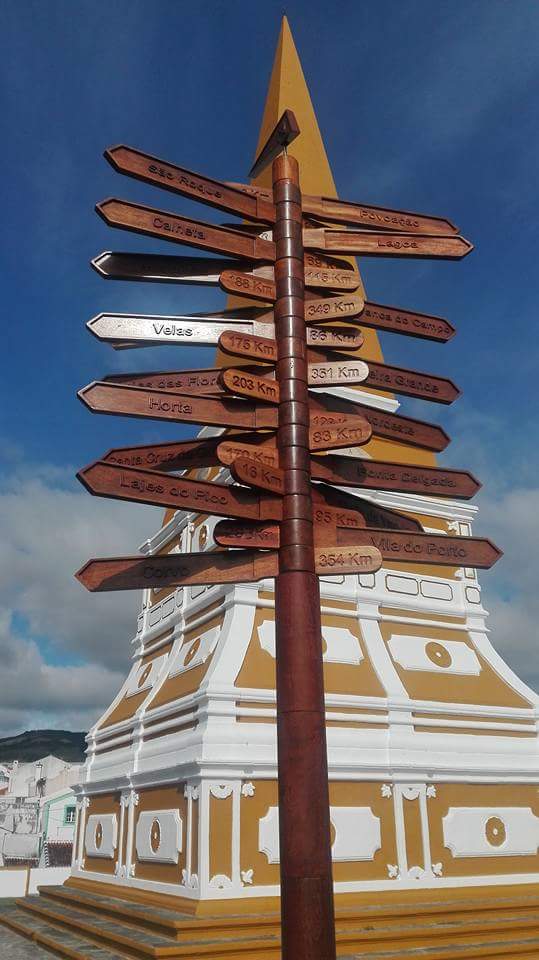
Fotografia de Dahra Santos
The monument was almost completely destroyed in the 1980 earthquake and was reconstructed in 1985. From the Alto da Memória, there is a stunning view of various landmarks such as Angra do Heroísmo itself and its bay, as well as Monte Brasil, Forts of São Sebastião and São João Baptista, Serra do Mourião, and Serra da Ribeirinha.
Igreja da Misericórdia
The Igreja da Misericórdia is located in the historic center and is an 18th-century construction. It was built on the site of an old 15th-century temple dedicated to the Holy Spirit, which housed the city’s first hospital.
The grand building has a tall and imposing façade, and inside, there are 18th-century tile panels and images depicting the descent of the Holy Spirit upon the Virgin and the apostles.
Bay of Angra do Heroísmo

Fotografia de Duarte Diniz
The Bay of Angra do Heroísmo is located on the southern coast of the island. This bay was of extreme importance from the 15th century, as it sheltered the port for ships and vessels carrying goods and valuables, stopping there before continuing their journey.
Its waters have a depth of 40 meters, and besides being a historic location, many people enjoy walking around the marina, appreciating the surrounding landscape, such as Monte Brasil and Fort São Sebastião. Many visitors also stop to appreciate the birds that frequent the area.
Praça Velha
At the beginning of the city, it was just a small square known simply as “Praça.” It was a meeting place for the city’s residents and remains so today.
Over the years, this square has had two other names: “Dos Santos Cosme e Damião” and “Praça da Restauração.” It has appeared in documents since the 16th century and has always served as the city’s reception area. It connects the main streets of the historic center and is located in front of the City Hall of Angra do Heroísmo.
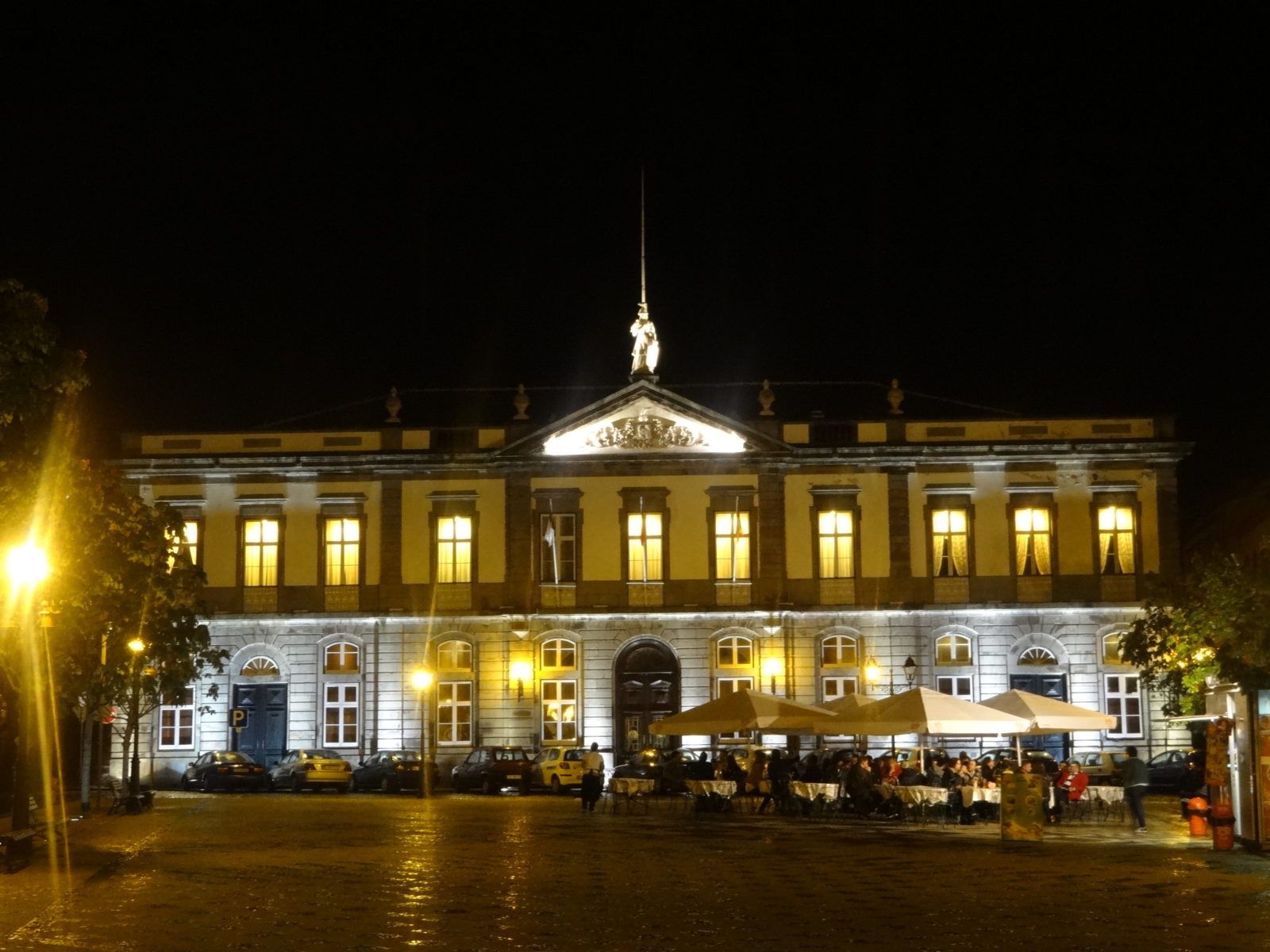
Fotografia de José Cachopo
Today, it hosts many craft stalls, has many outdoor cafés, and is a meeting place for residents and visitors alike.
Statue of Vasco da Gama
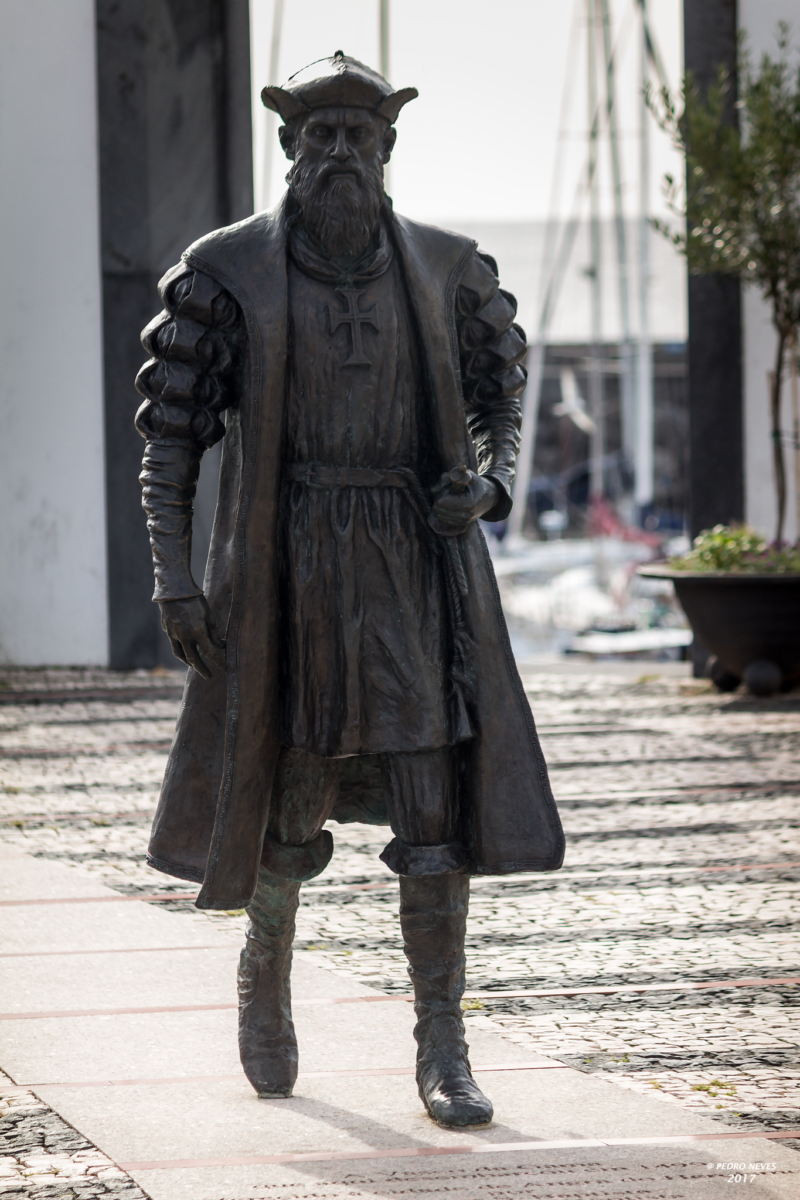
Fotografia de Pedro Neves
The Statue of Vasco da Gama is located in the Customs courtyard near the city gates. On one of his return trips from expeditions, Vasco da Gama stopped in the city and ended up burying his elder brother there, who died of an illness.
According to accounts, Vasco da Gama was deeply affected and saddened by his brother’s death, and after the incident, he spent about three months on Terceira Island.
The statue was a gift from an emigrant from the island who wanted to honor Vasco da Gama and his visit to Terceira Island.
Convent of São Francisco
The Convent of São Francisco was the headquarters of the Franciscan Province of Saint John the Evangelist, which congregated the Franciscan religious from the Azores.
Today, the convent houses the Museum of Angra, located in the historic center of Angra do Heroísmo. The current building was probably constructed around 1663, with the previous one dating back to approximately 1474. The new construction was prompted by the need to expand the building.
The new convent was inaugurated in 1672. After the extinction of religious orders, the convent served as a school in 1834, and in 1969 the current Museum of Angra do Heroísmo was installed.
The interior of the museum is rich, with beautiful tile panels and various sculptures. Notable individuals, such as João Vaz Corte-Real, the discoverer of Newfoundland, and Vasco da Gama’s brother, Paulo da Gama, were buried in the church.
Church of the College
The Church of the College, also known as the Church of Saint Ignatius of Loyola, belonged to the former Jesuit college and was built in the mid-17th century.
It is located at Largo Prior, near Jardim Duque da Terceira. Its function was to serve the College of the Society of Jesus in Angra. Its construction took place between 1636 and 1637, but it was only opened for religious worship in 1651. It has been classified as a Public Interest Property and also suffered from the 1980 earthquake, subsequently undergoing restoration.
Fortress of São João Baptista
The Fortress of São João Baptista, also known as the Castle of São João Baptista, is part of a defensive complex initiated during the Philippine Dynasty (1580-1640). It is located on the peninsula of Monte Brasil and is one of the most important fortifications in the Azores due to its size.
This fortification, built by the Spanish, was dedicated to Saint John the Baptist and was one of the vertices of the Spanish defensive triangle. At that time, it protected the fleets carrying American silver, as well as those from the Carreira da Índia and Brazil.
Along with Fort São Sebastião, it defended the bay of Angra against pirate and corsair attacks targeting the treasures brought by vessels from India and Brazil.
Fort São Sebastião
The Fort São Sebastião, also known as “Castle of São Sebastião,” is located at the port of Pipas, atop a small hill in the historic center of Angra do Heroísmo. This was the first major maritime fortification in the city.
Fort São Sebastião, along with the Fortress of São João Baptista, played a crucial role in defending the islands of the Azores archipelago against pirate and corsair attacks, as it was the stopover point for vessels from the Carreira da Índia and fleets from Brazil that were en route to Portugal.
Photos
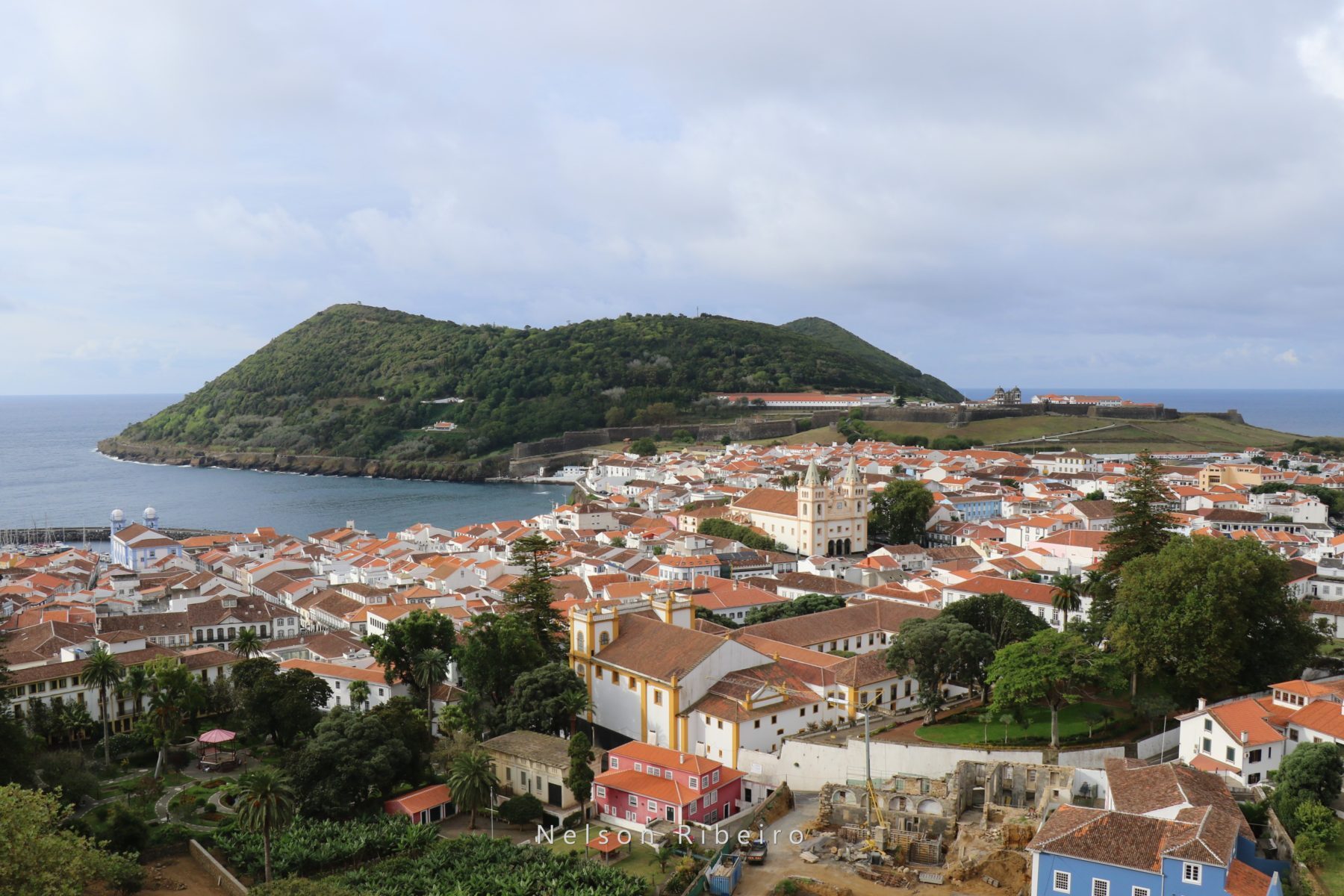
Fotografia de Nelson Ribeiro
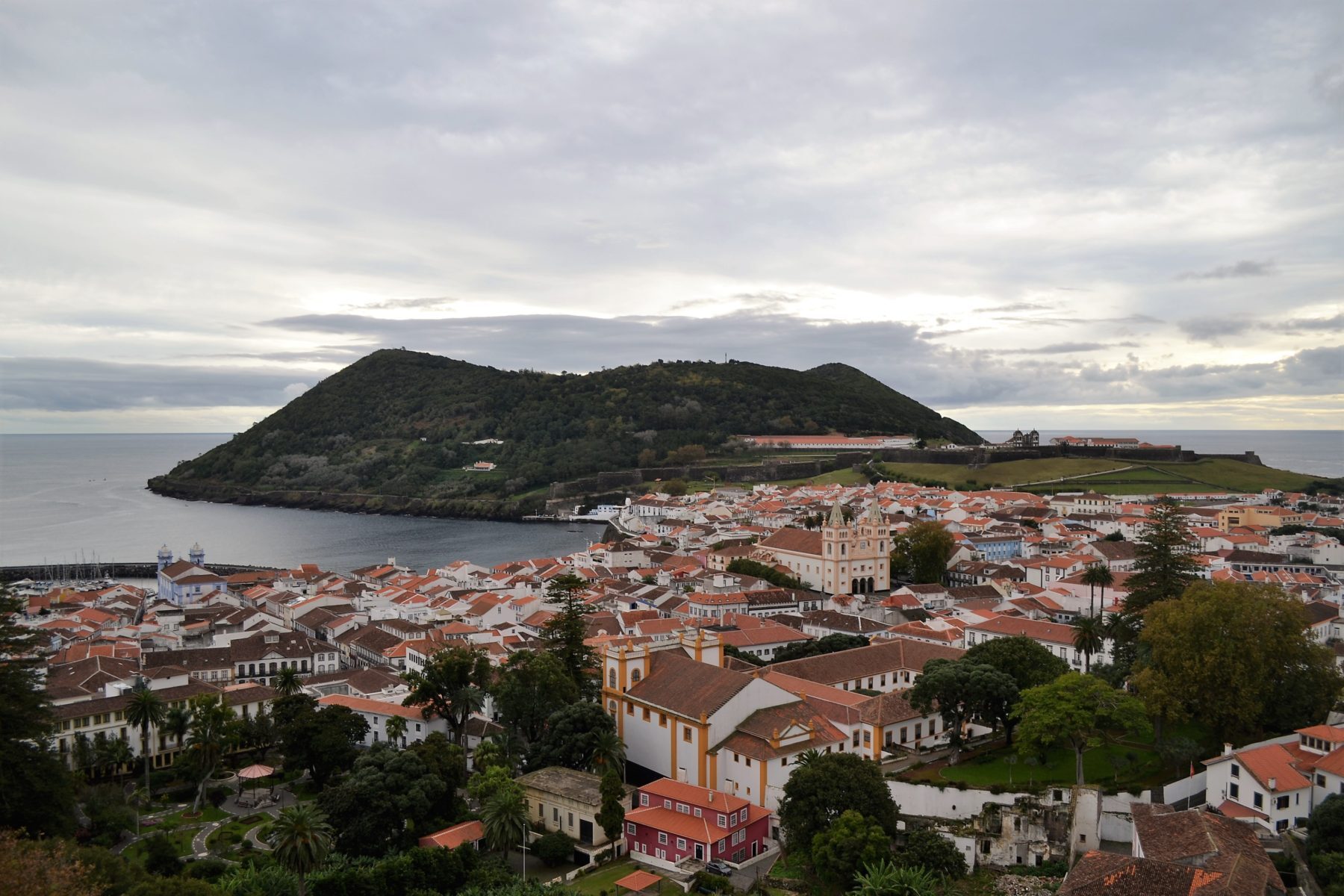
Fotografia de Carla Dias
Video
Angra do Heroísmo is a city rich in history, and one day in the city will not be enough to explore all the valuable heritage it has. It is recommended to visit and enjoy all the stories this place has to tell, as well as to hear from the locals stories known only by those who live in history.
Don’t miss: Places to visit on Terceira Island
- 🔒 Travel insurance with 15% discount for the Azores or another destination Click here to simulate >
- 🛫 Looking for trips to the Azores? See these promotions >
- 🚘 Rent a car in the Azores? The best rent-a-car >
- 🧗🏼♂️ Activities and Experiences during your stay? Check it out here >
- 🐳 See Whales and Dolphins? Book now online >
- ❌ Have you had a canceled or delayed flight in the last 3 years? Receive your compensation here >

